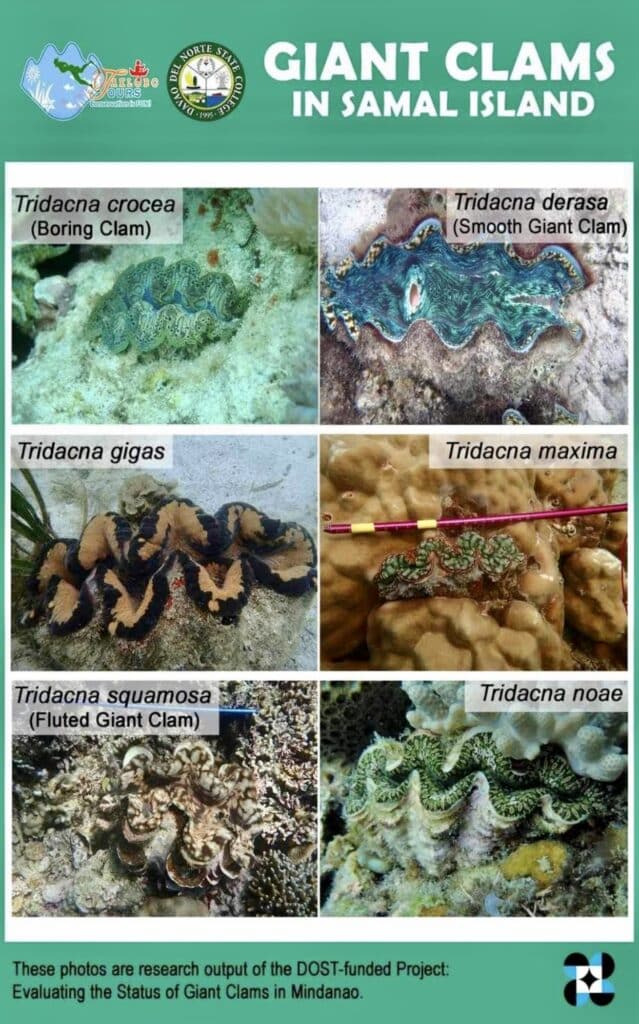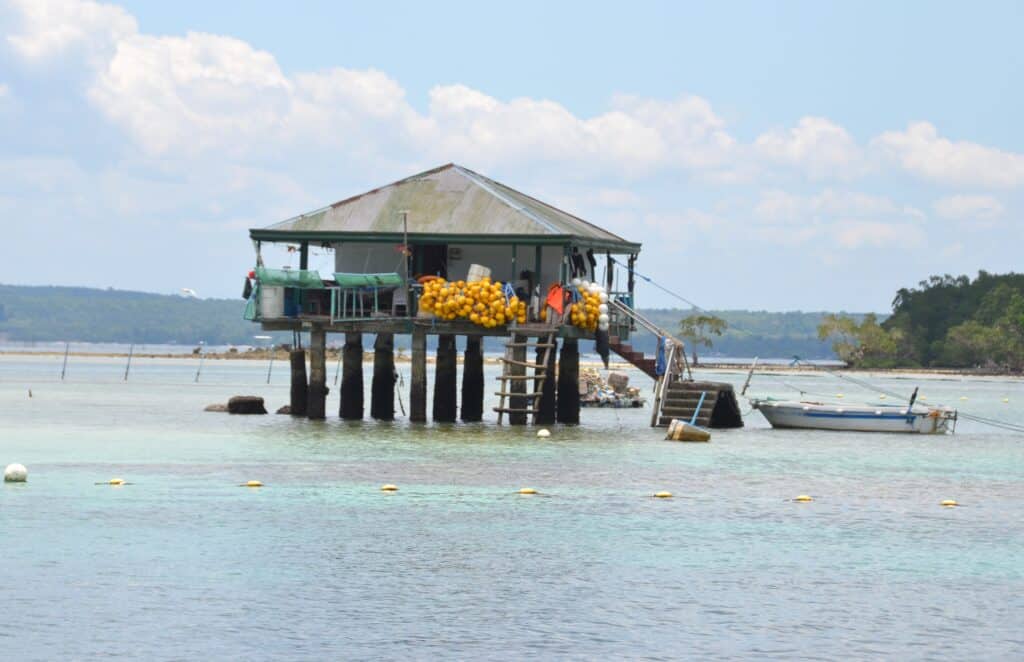Text and Photos by Henrylito D. Tacio

“It was fun! I don’t think cameras could ever capture how beautiful they are up close. In addition, it was my first time snorkeling which made the experience even more memorable,” said Valerie Nuval, a reporter for Vera Files.
“Super saya and overwhelming! I have never imagined how beautiful the creatures that live in our waters are,” said Abigail Abigan, of the Internews’ Earth Journalism Network.
ABS-CBN’s Izzy Lee commented, “The best part of the trip was snorkeling at the Giant Clam Sanctuary on the Island Garden City of Samal. It was beautiful – I wanted to dive instead!”
All three, who came from Metro Manila, were talking about their experience during their recent Taklobo Tours at the Island Garden City of Samal (IGACOS).
The Taklobo Tours is one of the initiatives of a group of fisherfolk based in barangay Adecor in Kaputian District who are trying to save some of the country’s remaining species of giant clams, locally known as taklobo.
The Adecor United Fisherfolk Organization are the caretakers of the giant clams that were transplanted by the Giant Clam Stock Enhancement Program of the University of the Philippines-Marine Science Institute (UP-MSI).
The Marine Reserve Park and Multipurpose Hatchery, as it is called, is under the supervision of the local government unit IGACOS.
Aside from preventing the disappearance of giant clams in the country’s waters, the organization also helps in raising awareness of the importance of giant clams and providing livelihood opportunities to members and surrounding coastal communities.
They do this through the Taklobo Tours which includes an hour of snorkeling. Visitors are brought by means of a motorized banca from the seashore to the floating cottage, where they are educated about the importance of giant clams.
Once the guests and visitors arrive in a floating cottage, they are given a brief orientation about the conservation status of giant clams, policies, rules, and regulations.
Then, they are given some instructions on what to do while snorkeling. They are told to wear a life jacket and given a snorkel and a mask. After that, they swim to the area where the giant clams are being raised. As the water is clear, they can see the endangered species up close.
The 14-hectare giant clam sanctuary helps empower and capacitate locals to become tourist guides and conservation warriors. Today, Taklobo Tours is now one of Samal’s most popular activities for tourists.
The success of the program proves that responsible tourism can flourish in a protected area for environmental conservation. Joel Gonzaga, who oriented the group of environmental journalists who visited the place during the recent Earth Day celebration, thinks so, too.
“We raise awareness by informing the people who come how endangered these giant clams are and that there are now laws regarding their preservation,” he said. “It is now prohibited to harvest them and there are some consequences if they do so.”
When the program started, there was resistance from the community as giant clams had long been a source of food and income for most of them. With Taklobo Tours becoming popular, they are happy that they have supported the initiative.
There are 12 species of giant clams and eight of them can be found in the Philippine waters. The giant clams, known in the science world as Tridacna gigas and considered the true giant clam, can grow larger than 4 feet across and weigh more than 180 kilograms.
The seven other species are: Tridacna deresa (smooth giant clam), T. squamosa (fluted giant clam or “hadgdan-hagdan”), T. hippopus (strawberry clam or “kukong-kabayo”), T. crocea (boring clam), T. maxima (elongated giant clam), T. hippopus porcellanus (China clam), and T. noae ningaloo (Noah’s giant clam or teardrop clam).
A recent assessment funded by the Philippine Council for Agriculture and Aquatic Resources Research and Development (PCAARRD) of the Department of Science and Technology (DOST) showed that the 8 species are still found in the country’s waters.
Surveys from 2018 to 2021 revealed high densities of restocked giant clams at several study locations where natural recruits of giant clams were also detected in 4 out 8 restocking sites.
“The presence of T. gigas recruits indicate that restocked clams are naturally spawning and producing new giant clams that may eventually grow into adults,” wrote Patrick C. Cabaitan, Roger G. Dolorosa, Girley S. Gumanao, and Cecilia G. Conaco in their collaborative report, “Giant Clams in the Philippines: Prevailing in a changing ocean through research and conservation.”
“While giant clams are still prevalent in the Philippine reefs, their overall abundance and diversity remain low,” the four authors wrote. “Overharvesting, poaching, habitat destruction, and bleaching remain among the major challenges against the giant clam populations.”
The researchers have found some areas which are still home to an abundant and diverse community of giant clams. “The presence of giant clams and juveniles suggests that local recruitment is successful,” they contend.
In Samal, six different species of giant clams are being raised in the sanctuary. Two species – T. squamosa and T. maxima – are the most abundant species as they are widely distributed around the island. The four other species are only confined to the western side of the island, close to the giant clams restocking site.
All in all, about 1,500 giant clams were brought by the UP-MSI for possible stock enhancement in the area. Marine scientists have considered farming giant clams as a means of promoting biological sustainability and maintaining biodiversity of the species.
Today, there are 2,906 teeming in the sanctuary.
The giant clam sanctuary is one of those that might be affected by the Samal Island-Davao City bridge once it is operational. There would be an influx of guests coming from Davao City and other parts of the country. Foreigners are most likely to visit Samal as it is known for its beautiful beaches and tourism destinations.
Most of those from Samal are looking forward to the construction of the bridge. “It would be a big boost to the tourism industry of Samal,” said Rem Art Flores, a tourist guide.
Among the envisioned environmental problems that may happen when the bridge becomes operational include water, electricity, and pollution (particularly garbage and plastics). – ###



